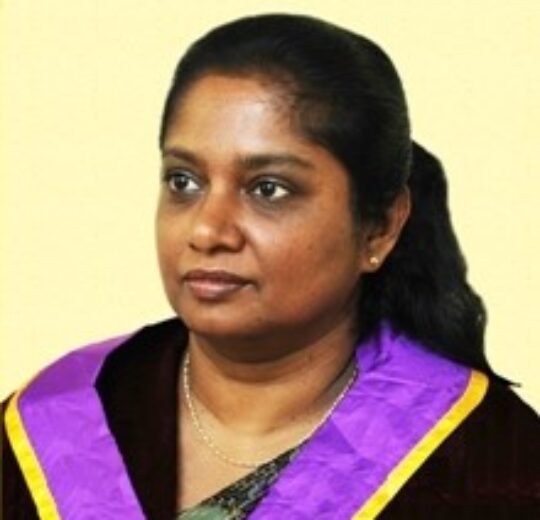The evolution towards ubiquitous (anytime, anywhere) communications and computing poses problems requiring novel ways of utilizing the frequency spectrum and the wireless channel. The group’s focus is on these aspects
Ongoing Projects
Modelling of optical carrier recovery and phase synchronization scheme
Modelling of optical carrier recovery and phase synchronization scheme. Current optical fiber communication systems are deviating from intensity modulated transmission schemes to phase modulated transmission schemes due to various reasons such as impairment mitigation, data rate increment, etc. Therefore, this research focuses on extracting phase information from a degraded phase modulated signal, which will be useful in optical detection and regeneration schemes. This research is funded by National Research Council (NRC) research grants.
Polarization Insensitive, Phase sensitive amplifier for phase Regeneration
New standards have been released recently for increasing the data rates used in optical fiber core and metro networks operating at 100 Gbps. Basically, 100 Gbps systems employ DP-QPSK schemes and in some of the 40 Gbps, optical networks are operating in (D)PSK/QPSK schemes. Therefore, this research focuses on extracting phase information from a degraded phase modulated signal which will be useful in optical detection and regeneration schemes. This research is funded by National Research Council (NRC) research grants.
Phase-sensitive amplifier – Characterization of signal Regeneration
Phase sensitive amplification is a widely considered regeneration technique, which has the capability of preserving the phase and amplitude information for both amplitude and phase-modulated signals. With the introduction of the new standards in transmission at 100 Gbps, the transmission and modulation schemes developed are DP-QPSK schemes and some of the 40 Gbps optical networks are operating in (D)PSK/QPSK schemes. Therefore, this research focuses on phase-sensitive regeneration schemes which are capable of regenerating both amplitude and phase of a degraded phase modulated signal contaminated with different linear and non-linear impairment and limits of the regenerator. This research is funded by National Research Council (NRC) research grants.
Visible Light Communication architectures for data transfer and power transfer
Visible Light Communication (VLC) is a neoteric technology and aroused great attention in the last decade due to the rapid developments in Light Emitting Diodes (LEDs) fabrication. Bandwidth, efficiency, availability, and security of VLC make them promise residential lighting equipment as well as an alternative cheap and fast data transfer equipment together with power harnessing.
An interesting application of VLC is Simultaneous Lightwave Information and Power Transfer (SLIPT). Harvesting energy from the surrounding environment is an important and practical solution for the Internet of Things (IoT) devices. The energy can be harvested while decoding the information carries in VLC. The performance comparison of the harvesting techniques of SLIPT and Simultaneous Wireless Information and Power Transfer (SWIPT) in indoor communication. SLIPT and SWIPT technologies are used power splitting receiver architecture to harvest the energy. This research is envisaged to investigate the performance and efficiencies of the two receiver technologies.
Visible Light Communication – Investigation of applicability and performance of higher-order modulation schemes with scrambling techniques
Challenges in RF and Wi-Fi systems have led telecommunication researchers to look for other alternatives to provide high-quality data transmission experience with less cost. This is the reason for the booming of Visible Light Communication (VLC) as a competitive technology. VLC is generally known to be a communication between a transmitter and a receiver using the visible light spectrum by the deployment of LEDs or Laser diodes as light sources and Photodiodes or image sensors as light sensors. Several application areas such as indoor, outdoor, vehicle-to-vehicle, underwater, medical, indoor positioning, and navigation have been under research due to the fact that different performance metrics are important for different applications. Huge attention has been attracted for indoor applications, as the majority of the future VLC systems are forecasted to be deployed for retail and electronic devices. As the typical modulation bandwidth of the commercially available LEDs ranges in few MHz, a fundamental limitation on achieving the required high data rates and spectral efficiency in VLC has been identified. This is the reason why the modulation scheme implemented in VLC has significant importance. This is the root cause for the researchers to come up with a vast range of modulation schemes classified under single carrier, multi-carrier, and color domain categories. This research is focusing on the application and investigation of the capabilities of higher-order modulation schemes in conduction with scrambling techniques for secure communication.
Hybrid cellular-networks
The low penetration of on-board devices supporting Vehicle-to-vehicle (V2V) communications hinders many possible applications in intelligent transportation systems. The research focuses on using communication capabilities of mobile phones to facilitate the process, and design low cost on-board units with much of the V2V communications processing handed over to the mobile phone. This research is funded by Senate Research Committee (SRC) long and medium term grants.
The detection of signals in noisy observations
The detection of signals in noisy observations is one of the fundamental problems in statistical signal processing. This problem also arises in various other scientific disciplines such as radar, sonar, wireless communications and finance. In its most basic form, the presence of a signal amounts to rank one departure of the population covariance matrix from the identity. Equivalently, the largest eigenvalue of the population covariance matrix deviates from unity. Since we do not have access to the population covariance matrix,we focus on the largest eigenvalue of the sample covariance matrix (i.e., signal plus noise) formed with the noisy observations (say S). Moreover, if the noise co-variance matrix is unknown, then it is common to construct another sample covariance matrix from noise only observations (sayR). Then it is natural to consider the behavior of the largest eigenvalue of F = R-1S in order to infer the presence of a signal. Therefore, the main objective of this project is to investigate the asymptotic (i.e., high dimensional) behavior of the largest eigenvalue of F matrix when R and S are Wishart distributed.
Our Research Members
-
Dr. Samiru Gayan
Senior Lecturer -
Dr. Kasun T. Hemachandra
Senior Lecturer -
Eng. A.T.L.K. Samarasinghe
Senior Lecturer -
Prof. Tharaka Samarasinghe
Professor -
Prof. (Mrs.) Dileeka Dias
Professor






